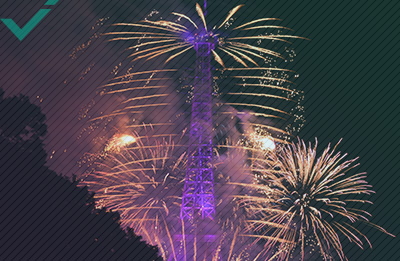The Ethnologue catalogue of world languages estimates there are currently 6909 living languages. That is 6909 ways of saying, “I love you” or “I’m sorry”. 6909 different ways of passing down cultural traditions or historical anecdotes. 6909 different ways of creating inspiration, motivation, and inclusion. However, despite this awe-inspiring number, 96% of these languages are only spoken by 4% of the world population.
Roughly half of those languages are spoken by fewer than ten thousand people, whilst a quarter has less than one thousand speakers. The risk of exclusion is a very real threat to these languages. Promoting a multi-language approach allows integration whilst maintaining the passing of knowledge through the spoken word.
THE HISTORY OF INTERNATIONAL LANGUAGE DAY
The origins of International Language Day date back as early as 1952. Bangladesh was the first nation to recognize it in support of the Bengali Language Movement. However, it wasn’t until November 1999 that the day was officially declared by the General Conference of the United Nations Educational, Scientific and Cultural Organization (UNESCO). This move by the UNESCO was “to promote the preservation and protection of all languages used by the people of the world”.
Since then, each year has been designated a different theme. A chance for member nations to focus their efforts. This has covered a multitude of areas including braille and sign languages, cyberspace and multilingual education. With powerful countries like Russia, the Philippines, and Canada taking part, its prevalence on the world stage is well renowned. UNESCO themselves even host an event each year at their headquarters in Paris.
Some may wonder why the 21st of February was chosen to commemorate this event. It is actually in honour the memory of those who were killed during the language movement in Dhaka. It’s clear to see that this day goes deeper than just being a celebration of language. The message stems from a need to recognize local languages, giving everyone a voice so that they can play an active part in society. Fortunately, it has become increasingly common for people to have adopted up to 3 different languages. Often using their native language and at least one language to communicate on an international level.

WHY IS IT IMPORTANT?
If we look at language from a simplicity point of view, surely if everyone adopted the same language communication would be easier? On one level this statement makes some sense. You would never have to worry about being able to talk with individuals from different countries but language carries with it far more than just a means of communication.
By ignoring the diversity of language, however, we risk ignoring the scientific knowledge and tradition that those languages bring. Former Director-General Irina Bokova of the UNESCO believes “this linguistic and cultural diversity may be our best chance for the future: for creativity, innovation, and inclusion”. This isn’t difficult to see, even at a local level, the same word can carry different connotations depending on where in your country you might be. This can affect the way a story is told or how information is passed on. Who knows what information we might miss if local languages were no longer used.

WHAT DOES IT MEAN FOR FUTURE GENERATIONS?
In an increasingly divided world, people able to communicate and articulate thoughts and ideas across nations may be the only way that the world stage starts to move forward. Respect and tolerance form a large part of bringing these niche languages to the forefront rather than allowing them to fade out. By instilling this thought process in younger generations we can ensure a continued support for the incorporation of minority languages. Even now to celebrate, many children in London perform plays, dances, and songs from other cultures. London alone features over 270 different nationalities.
Deep-rooted in tradition is often-overlooked scientific knowledge, allowing children access to this will only look to inspire them. Favourably, the explosion of social media has allowed unprecedented levels of communication between social and cultural groups. This ease of communication can sometimes make us lazy but even companies like Microsoft recognize the power they have to promote language at this level. In 2012, Microsoft added the Hmong Daw language to Bing’s translation list. Bing now boasts over 60 different languages available for translation. This is some way short of the 6909 spoken across the world but only reinforces the need to continue driving this essential day.


